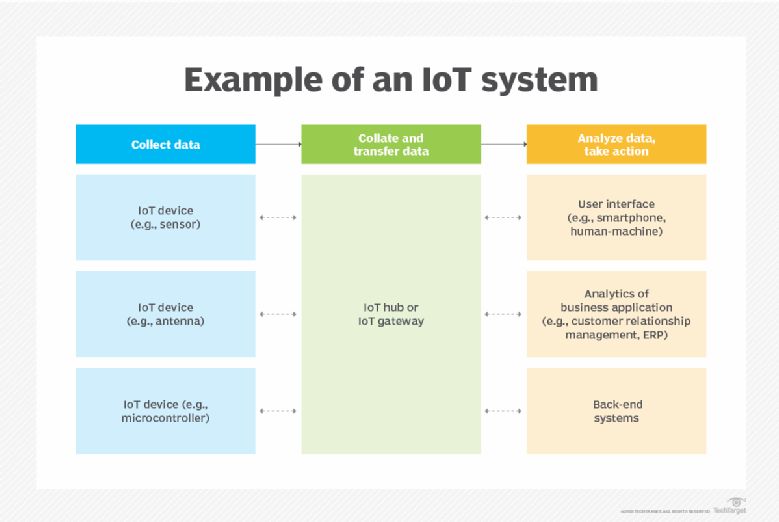Ultimate IoT implementation guide for businesses

The Internet of Things (IoT) refers to a network of interconnected devices, or "things," designed to collect and exchange real-world data across the internet or other networks. These devices are deployed in various sectors to monitor and control environments in real-time. For instance, heart sensors in patients provide health data to doctors, while smart home devices like security systems and appliances are controlled through smartphone apps. IoT is also applied in agriculture, with farmers using sensors to optimize irrigation, and in industrial settings, where sensors monitor safety conditions. Smart cities utilize IoT to enhance traffic management and reduce congestion, showcasing the wide applicability of IoT across industries.
A core aspect of IoT is its focus on real-world data, enabling businesses to monitor and manage physical environments. Unlike traditional data, IoT data reflects real-time conditions, such as the status of manufacturing equipment or environmental factors like temperature or pressure. The immediacy of this data is crucial in many situations, like healthcare, where heart data must be processed immediately to ensure patient safety. As a result, the efficiency of IoT networks in terms of bandwidth and connectivity becomes vital, as the relevance of IoT data is often time-sensitive.
In IoT systems, data collected by devices serves specific purposes. Often, the data is part of a control loop, where information triggers real-world actions, such as locking a door remotely or optimizing workflows in factories based on machine performance. The scope of IoT data collection is vast, requiring numerous sensors to gather a detailed picture of an operational environment, whether in agriculture, manufacturing, or city infrastructure. These sensors generate large amounts of data, which are often processed for big data initiatives, including machine learning (ML) and artificial intelligence (AI) applications that help optimize processes and predict outcomes.
IoT operates through multiple layers, including device, network, computing, and application layers. Each IoT device is a small computer with embedded processors, sensors, and network connectivity, transmitting data across IP-based networks like Wi-Fi or cellular networks. The collected data is processed at IoT gateways before being sent to back-end systems for analysis. This back-end processing can occur in data centers, clouds, or edge computing locations, with interfaces allowing human operators to monitor the system. The architecture of IoT systems demands careful consideration of device integration, network capabilities, and security to ensure smooth operation and data safety.
IoT is widely used across various industries, each with unique applications. In homes, IoT devices manage energy, security, and automation tasks. In manufacturing, IoT helps track assets, optimize energy use, and support predictive maintenance. In public safety, IoT sensors enhance city infrastructure, monitor traffic, and detect crime. The medical field uses IoT for patient monitoring and equipment tracking, while retail leverages IoT for inventory management, shopper behavior analysis, and automated checkout systems. These diverse use cases highlight IoT’s ability to transform industries by providing real-time data and automation.
source: https://www.techtarget.com/iotagenda/Ultimate-IoT-implementation-guide-for-businesses